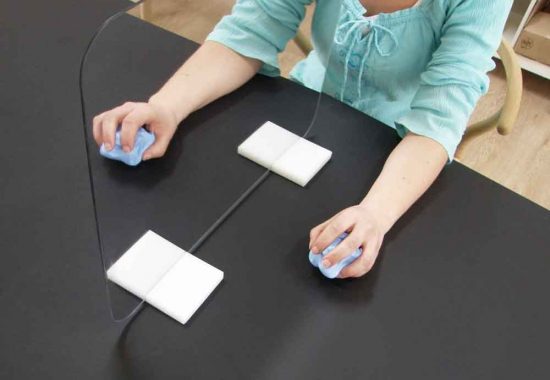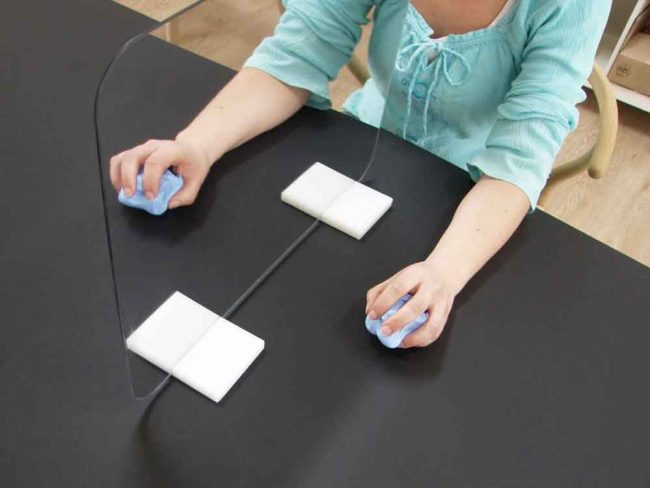Steven Jax, PhD, has spent most of his career at Moss Rehabilitation Research Institute (MRRI), and doesn’t have plans to leave any time soon. Dr. Jax came to MRRI from Penn State, where he did his doctorate work in basic sensorimotor processing. He began his tenure at MRRI as a post-doc in the lab of Laurel J. Buxbaum, PysD. There, he began his research on rehabilitation in stroke patients, which he’s expanded over the years as director of the Perceptual-Motor Control Laboratory.
“I started off as a basic scientist, studying how the brain controls movement,” says Dr. Jax. “I’d done early work and my dissertation on topics related to that question. But I really became dissatisfied with only researching things that didn’t have a lot of real-world application. That’s when I decided to apply my experience with how the brain controls movement in a practical way.”
Like many researchers at MRRI, Dr. Jax’s work stems from the belief that basic science should inform the development of rehabilitation therapies. He decided to follow his interest in applying theory to practice, and began looking at motor abilities in people who had sustained neurological injury, mainly in the form of stroke.
“I sought out a lab that would let me expand the applicability of my work to individuals with some form of brain damage. MRRI was great place to do that,” he says.
Dr. Jax became interested in mirror therapy, which was originally used for other forms of injury (namely phantom limb pain, where an individual who has lost a limb feels pain in the missing limb). He is currently leading an effort to apply mirror therapy to people who have sustained damage to one side of their brains—and bodies—from stroke.
“Our brains trust what we see much more than what we feel,” says Dr. Jax. “Mirror therapy utilizes that phenomenon.”
In mirror therapy, a mirror is placed perpendicular to the person’s midline, with the impaired side of the body hidden behind the mirror so they’re seeing only their “good” side make movements. The reflection of the moving good side appears in the position of the impaired hand, which strengthens neurological control over the impaired side.
“If a person’s left hand has problems from a stroke on the right side of the brain,” says Dr. Jax “we place the mirror so that it reflects the right hand. When the right hand moves, it appears as though the left hand is moving. This illusion tricks the good right hemisphere of the brain into taking greater control over the movements of the left hand.”
Dr. Jax and his colleagues currently are working on an NIH-funded grant to test how mirror therapy might work as a home-based therapy. One of the big problems in stroke rehabilitation is that it’s expensive and time-consuming for people to come into a rehabilitation center for extended periods of time, so the unfortunate result is that therapy often ends too soon. Taking effective therapies home may potentially benefit patients and their families, so Dr. Jax is looking at the efficacy of mirror therapy when it’s used at home after an initial period in-house.
Developing Individualized Treatments
Another area of research interest for Dr. Jax is determining why some therapies work for some patients but not for others.
“There are lots of different therapies,” Dr. Jax explains. “All of them work OK, but some patients do really well, and some patients show no benefit at all. We want to show why that is, and be able to predict who will benefit or not. Then we can accurately give the best therapy for the individual.”
For instance, if the brain’s visual system is damaged, a therapy that relies on visual feedback may not be useful—so knowing more about the individual effects of an injury will be key to applying the most effective therapy.
Branch Coslett, MD, research neurologist with MossRehab and William N. Kelley Professor of Neurology at the University of Pennsylvania, has enjoyed collaborating with Dr. Jax over the years.
“Steve brings something special to MRRI,” says Coslett. “He’s a card-carrying motor control guy. There are some collaborations where people’s expertise is sort of redundant. But Steve is just incredibly good at what he does. No one knows motor control like he does.”
Dr. Coslett adds that he and Dr. Jax have other interesting projects in store for the future.
“We’ll be doing something very exciting—studying the effects of virtual reality treatments for rehab,” says Dr. Coslett. “With virtual reality, you can make someone’s arm look like it’s doing something it’s not, like playing games. It allows people to kick a ball, for instance. It’s like mirror therapy, but people are more likely to sustain a level of activity with virtual reality.”
The two are working to develop a virtual reality environment for treating motor problems after stroke, which they’ll be exploring more in the coming years.




8 comment on “Focusing on Visual Perception to Improve Motor Performance After Stroke”